PROTECT YOUR DNA WITH QUANTUM TECHNOLOGY
Orgo-Life the new way to the future Advertising by AdpathwayGerbera daisies delight nursery shelves and pop up in grocery stores as temperatures warm in spring. Their broad, ray petals in saturated pigments from soft pink to sunny yellow to bright red bring unmatched, clear color. It’s no wonder they’re among the most popular cut flowers, spreading bouquets of cheer with their symmetrical daisy flowers.
The gerbera daisies we bring home as small, potted specimens hail from the ideal environments of controlled greenhouses. They’re near perfection, with lush, deep green leaves and multiple blooms on sturdy stems. With the right cultural conditions (and some luck), they’ll stay that way as we repot them at home to grow all season and beyond.
Gerbera jamesonii is native to South Africa, where it experiences sunny, mild conditions at the sweet spot of frost-free winters and coolish summers. The cheerful blooms require specific conditions for sustenance, whether growing the gerbera daisies in pots as annuals or year-round.
Select the Container and Potting Mix
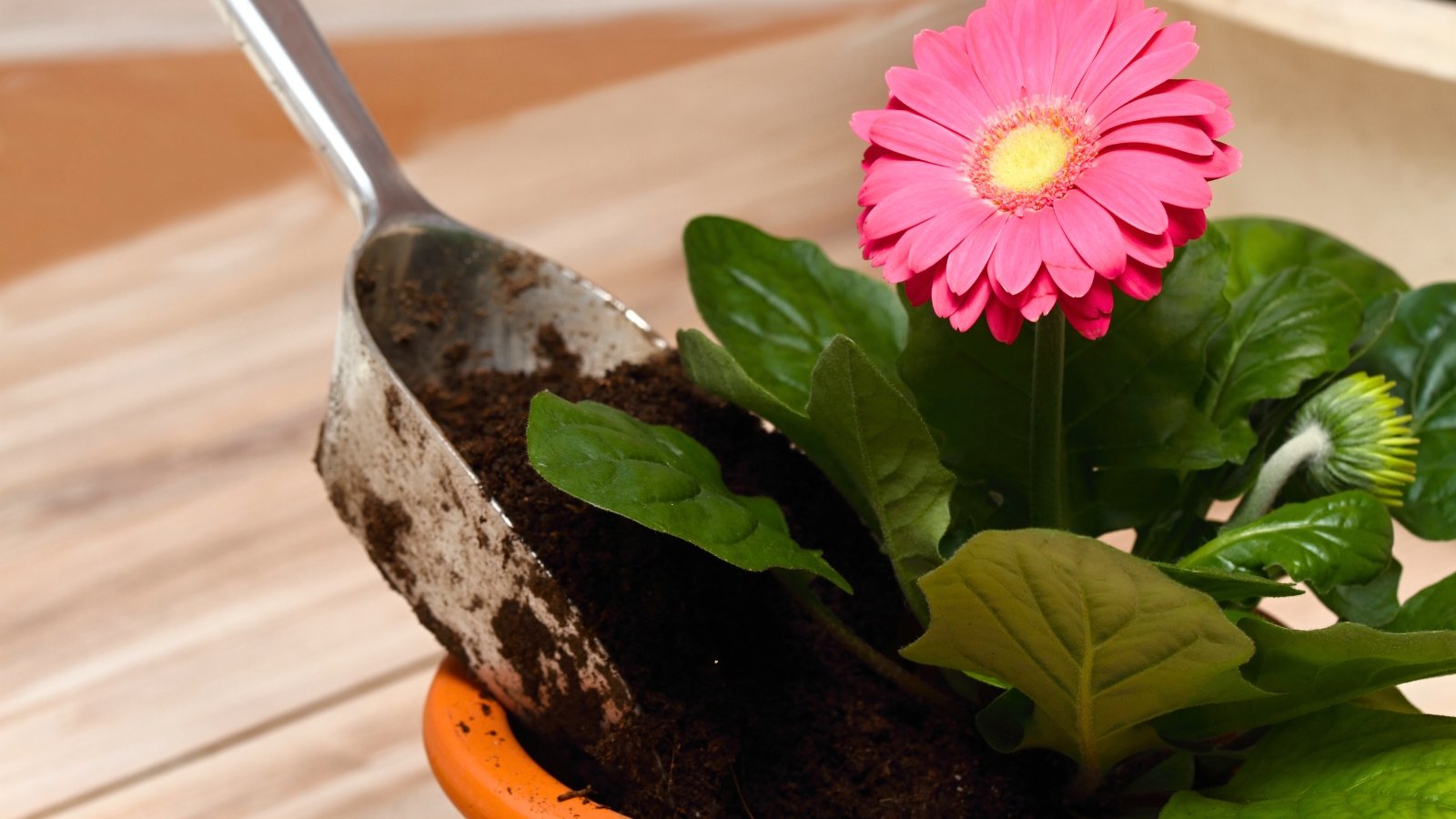 Clay pots help roots breathe but need watering more often.
Clay pots help roots breathe but need watering more often.To accommodate extensive root growth, opt for a container at least 12 inches deep and two inches wider than the nursery pot. Use a larger pot if creating a combination arrangement to allow space for airflow around the daisy. The pot should have ample drainage holes for water to flow through freely. Clay pots are beneficial for root health, though they dry out more quickly than other materials like plastic. The pot material factors into watering frequency.
An organically rich, well-draining potting mix gives potted gerberas the best foundation. Start with a quality mix formulated for containerized growing. These provide nutrients, aeration, and moisture retention with a sterile base. To increase coarseness for improved aeration and drainage, amend with a small amount of perlite or sand.
The Right Temperatures
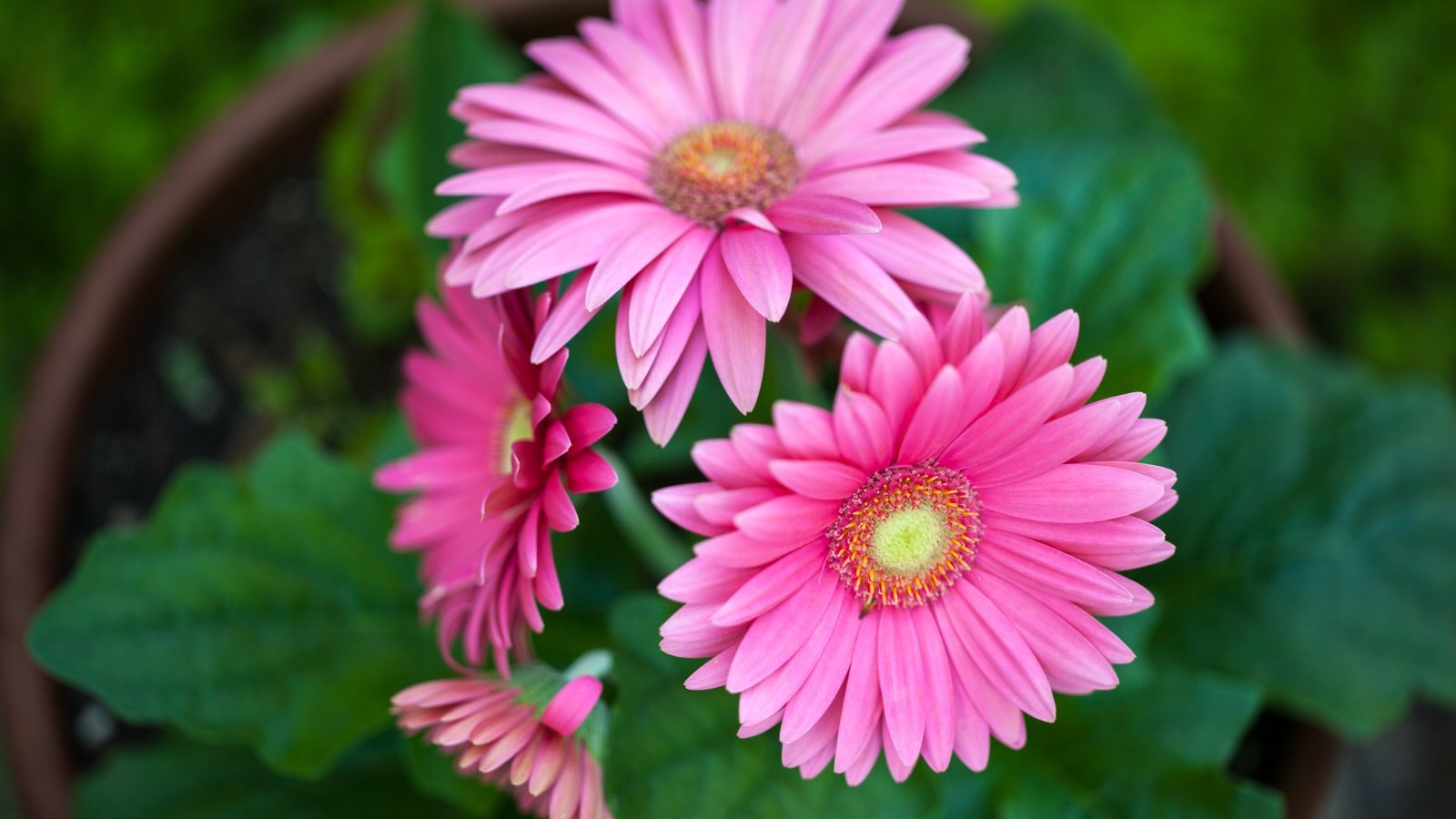 Too much heat or cold and these blooms start to suffer.
Too much heat or cold and these blooms start to suffer.The trickiest growing requirement for many of us to meet is the ideal temperature range. The daisies are tender perennials in USDA zones 8-11 and grow as annuals elsewhere. Gerberas need a mild 60-70°F (16-21°C) to thrive. They tolerate brief dips or spikes in either direction, but not drastically and not for sustained periods. They’re cold-sensitive and also wither in high heat. They withstand brief drops as low as 30°F (-1°C), but won’t survive with lengthy spells below freezing.
For those of us in southern climates, it’s not necessarily the cold but the heat that hinders the daisies. Often grown as spring annuals, they yellow and peter out as summer approaches.
The advantage of growing gerbera daisies in pots is portability. Repositioning and moving the containers let us match the ideal temperatures as closely as possible. We can move them to spots with afternoon shade to protect them from intense summer rays. In winter, they travel to protected spaces to ward off cold exposure.
The Best Light
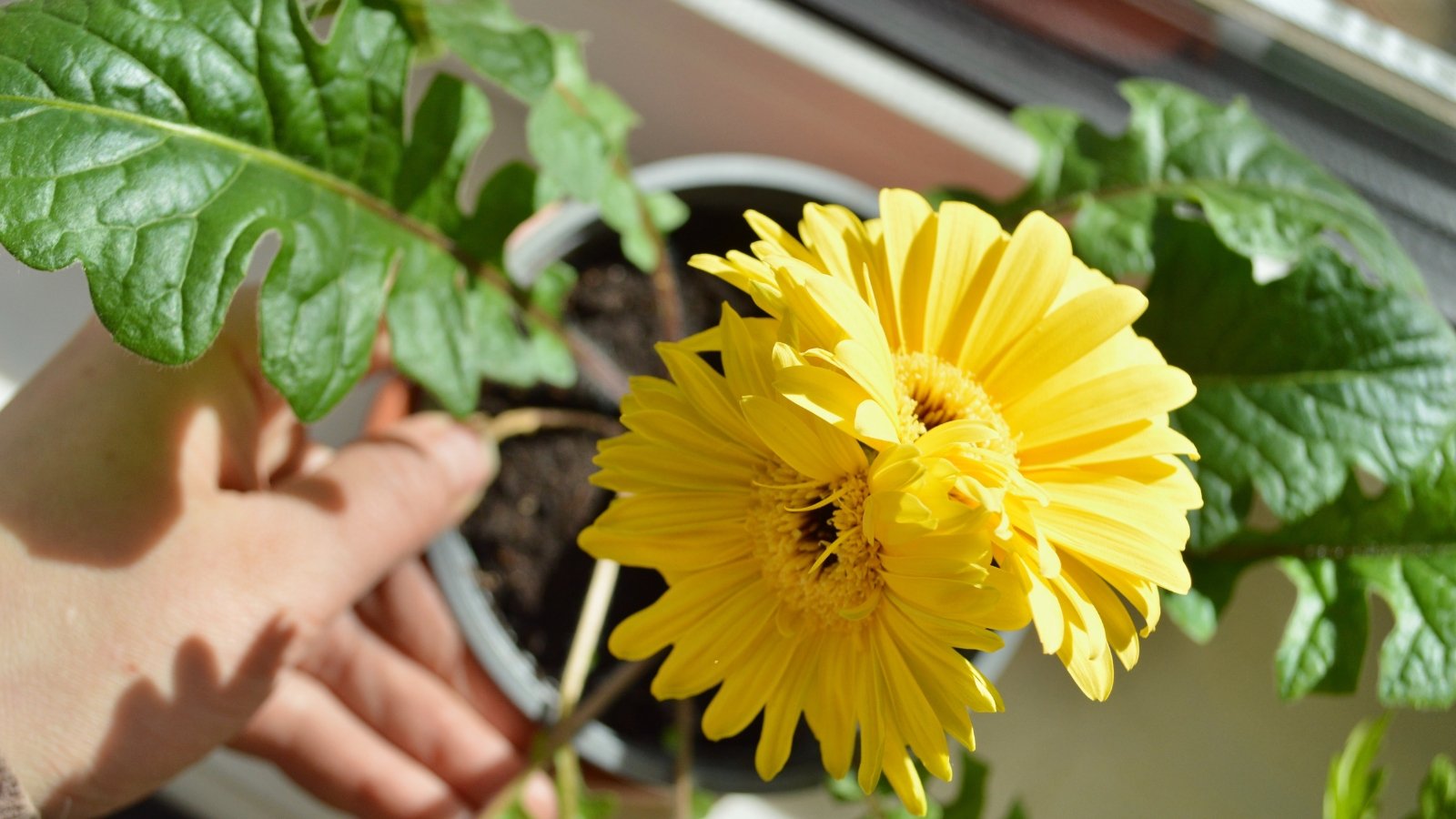 Aim for six hours of sun, then let them rest softly.
Aim for six hours of sun, then let them rest softly.While the daisies don’t love high heat, they do need full sun. Six or more hours of daily sunlight is ideal. Site the pots where they’ll receive generous morning sun and dappled light in the afternoon. Direct mid- and late-day summer sun can burn the leaves and petals in warm climates.
Situate the Crown
 Good airflow around the base keeps disease away naturally.
Good airflow around the base keeps disease away naturally.With the proper container, potting media, and the right siting, it’s time to pot up the showy annual (or tender perennial). When transplanting from the nursery pot to the larger container, install the crown a little high. Planting slightly above soil level allows for settling while protecting the crown from excess moisture.
Aim for the same height as the crown was in the nursery pot. Planting just above the surface improves air circulation around stems and keeps them from overly humid conditions, like sitting in moist soils. Crown and stem rot are fungal problems for gerberas planted too deeply. A sunken crown also impedes growth and flowering.
Good air circulation is key for gerbera daisies in pots to minimize diseases. In combination plantings, maintain space around the daisy stems. Prune other specimens if they encroach as a means to prevent humidity around the crown and leaves. Situate pots with airflow between walls, structures, and other containers.
How to Water
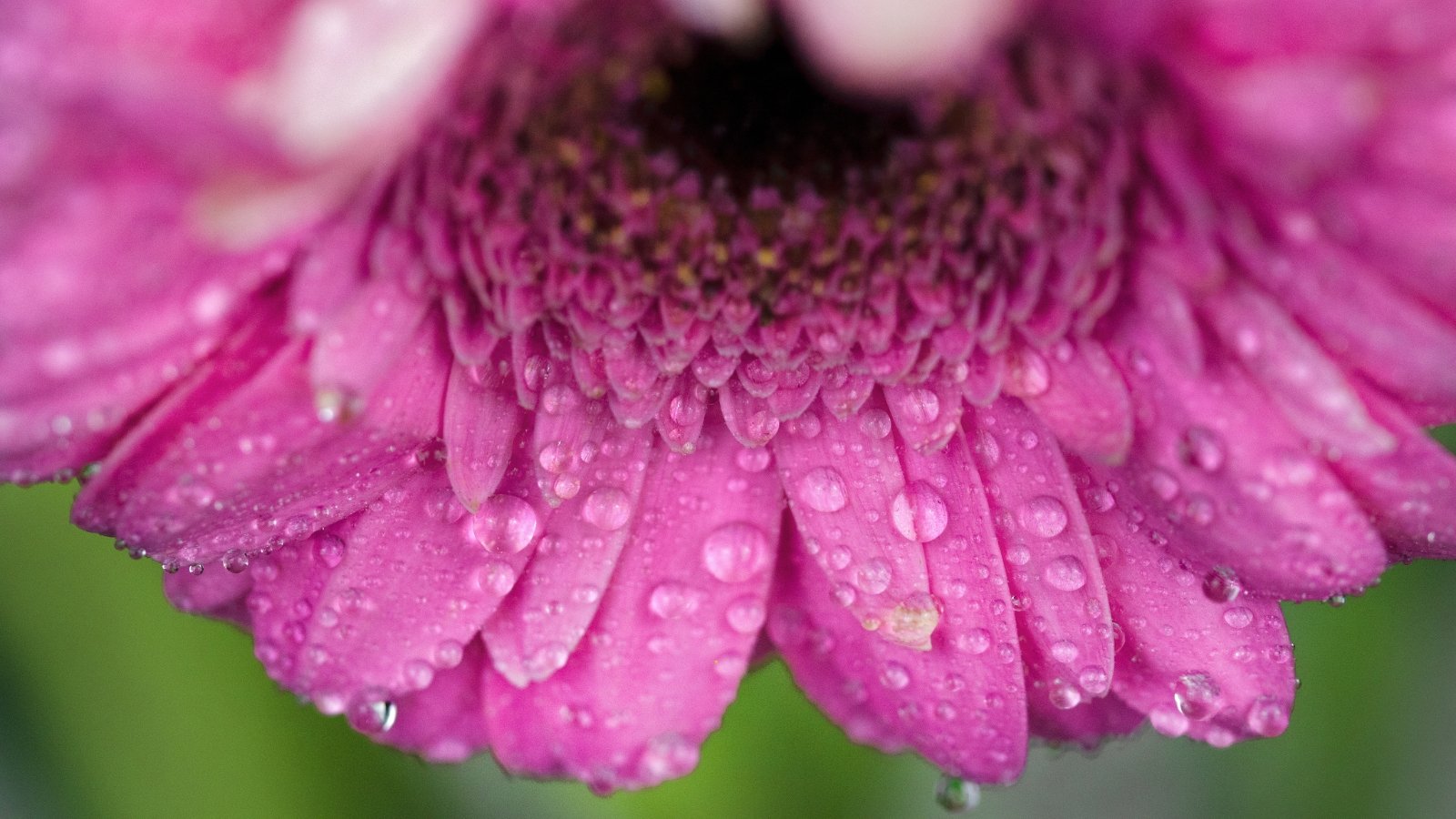 A little dryness between watering keeps roots healthy.
A little dryness between watering keeps roots healthy.Gerbera daisies in pots do best with regular moisture, with slight drying between sessions. Water deeply when the potting media feels dry an inch below the surface. Frequency is usually once a week or two, depending on the growing environment. Let water flow through the drainage holes for full saturation. If using a saucer to collect runoff, empty it shortly after watering to prevent soggy soils.
Err on the dry side rather than overwatering, as root rot from overwatering is a common cause of decline. In oversaturated soils, fungal rot renders the roots unable to uptake water and nutrients to support upper growth and flowering.
To stave off other fungal problems like powdery mildew, anthracnose, and botrytis, avoid wetting the foliage unnecessarily during watering sessions. Give leaves a bath or a dusting on occasion to get rid of pest-attracting conditions, but limit damp situations. Water early in the day to best support plant processes and also prevent prolonged moisture.
Fertilizing
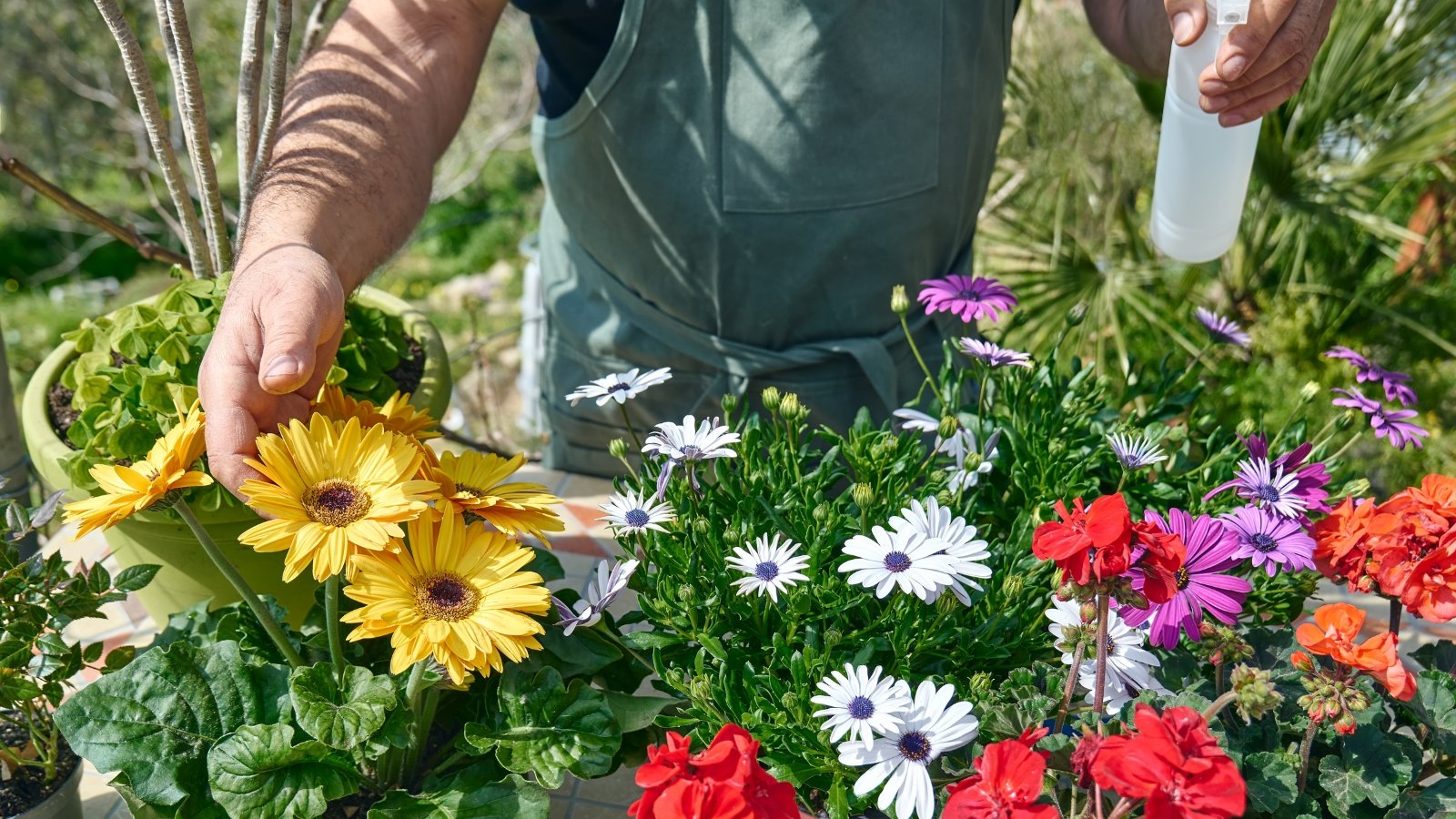 Avoid feeding during heatwaves to prevent stressing fragile growth.
Avoid feeding during heatwaves to prevent stressing fragile growth.A boost in nutrition helps gerbera daisies in pots realize their full blooming potential. Organic liquid feeds for blooming plants require once-a-month applications, or every two weeks at ½ dilution. Slow-release granular options distribute nutrients gradually over a couple of months.
Fertilize in the active growing seasons of spring and summer, stopping in late summer as growth slows and plants prepare to overwinter. Avoid fertilizing in high heat situations, too, as the daisies try to weather them. Fertilizing stressed plants only adds to the situation by prompting new growth with few reserves.
If you notice yellowing leaves between the veins, iron or manganese deficiency may be the cause. Opt for a fertilizer that contains these to restore the elements.
Pruning and Maintenance
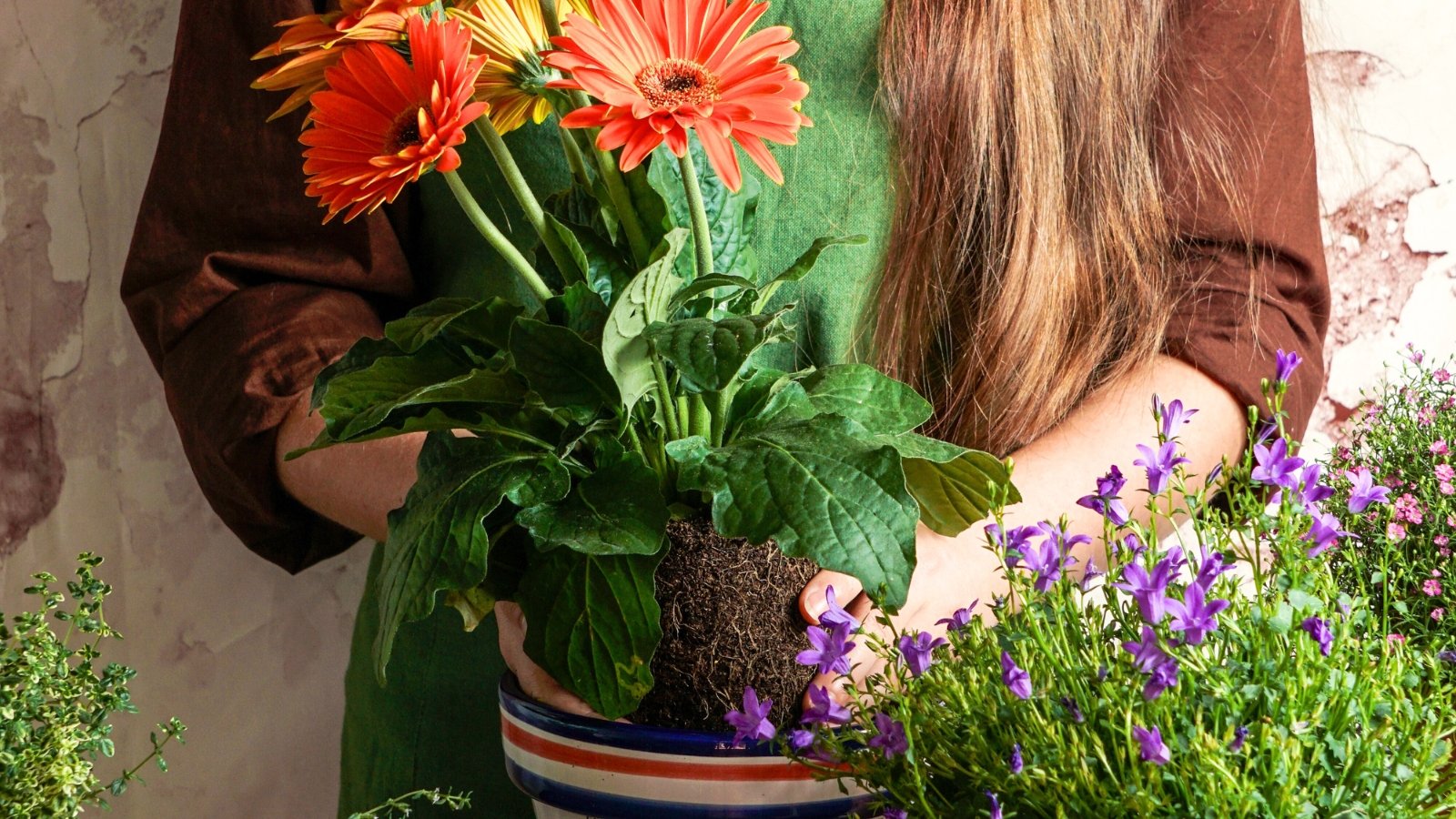 Regular repotting keeps the soil rich and plants thriving well.
Regular repotting keeps the soil rich and plants thriving well.A thriving daisy doesn’t require much maintenance other than regular water and fertilizing. Deadhead faded flowers to promote new blooms. Clip off yellowing leaves as they crop up to prevent disease.
The potted specimens benefit from repotting each year if carried over. The roots grow quickly and need a bigger pot or a trim and refreshed potting mix. If you’re at the repotting point, lucky you – you have skillfully maintained the daisy within its cultural threshold. The best time to repot gerbera daisies is in the spring before flowering.
The daisies need repotting when roots pop out of the drainage holes or on the surface. They may show wilting leaves and stems as soil mass decreases, and soil dries out more quickly as the roots run out of room. Slowed new growth and a lack of flowers are other indicators to repot.
Another reason to repot is to refresh the soil’s nutrition. Potting mixes break down with regular watering and root absorption. They begin to lack nutrients, aeration, and oxygenation necessary for the plant’s health.
Overwintering
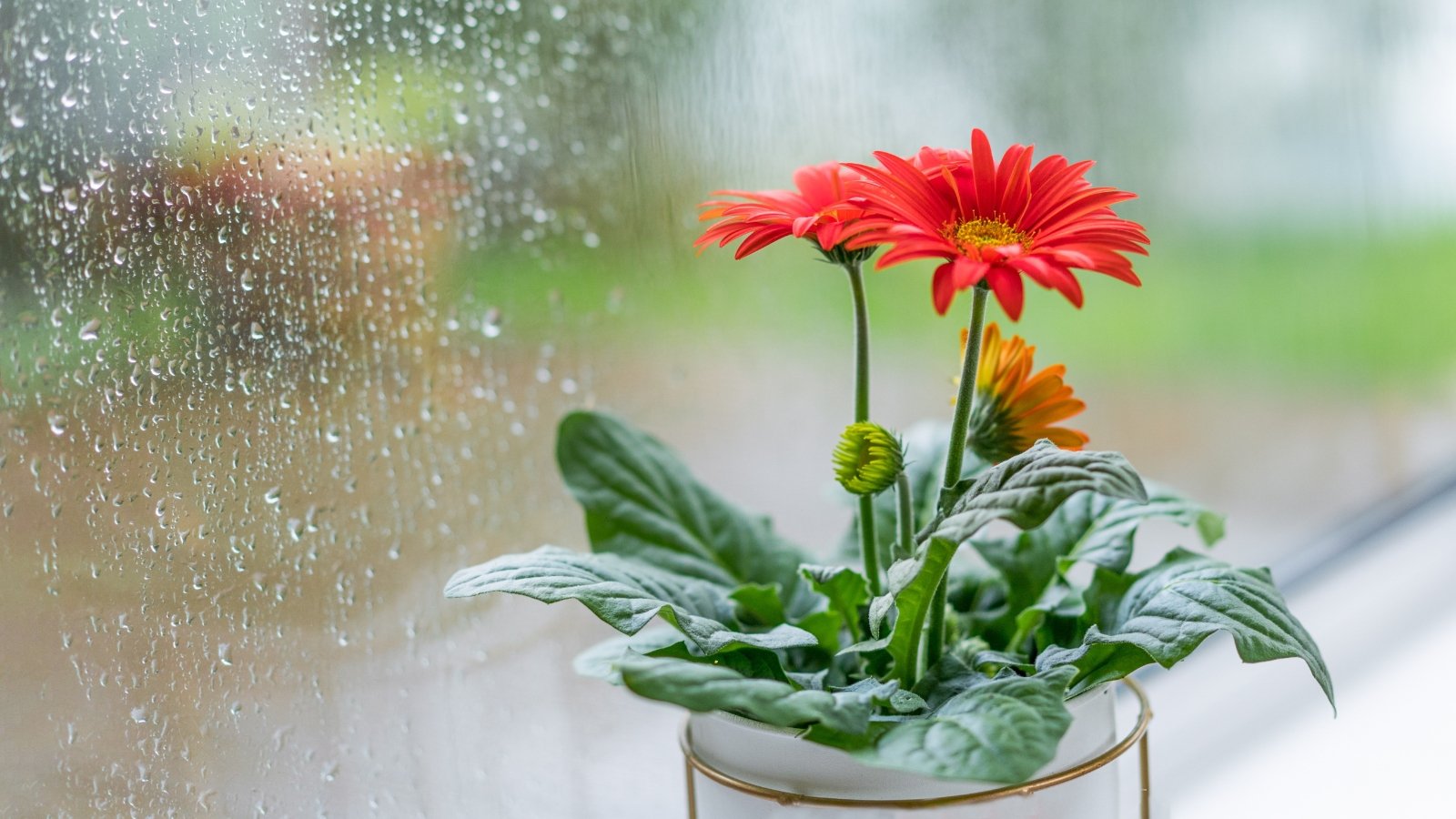 Bring them inside before chilly nights settle in.
Bring them inside before chilly nights settle in.To protect the tender species from winter chill, plan to move them indoors or to a protected area before temperatures are consistently in the low 40s (~4°C). To transition them in the fall:
- Stop fertilizing by late summer
- Move them to a sheltered location like a garage, basement, or cold frame with cool temperatures (around 45-50°F or 7-10°C) and some natural light
- Or, move them indoors to grow as houseplants in a bright spot out of direct sunlight, like an east-facing window or filtered, indirect light from southern or western exposures.
- Reduce watering, waiting until soil dries about two inches below the surface for houseplants and a few for those in cold storage (don’t allow roots to dry out completely, but once a month is usually sufficient)
- Move the daisies outside after spring’s final frost and as temperatures rise to the 50s (10°C) and above
- Resume regular watering, fertilizing, and deadheading to enjoy another season of the happy blooms


 2 weeks ago
10
2 weeks ago
10





















 English (US) ·
English (US) ·  French (CA) ·
French (CA) ·